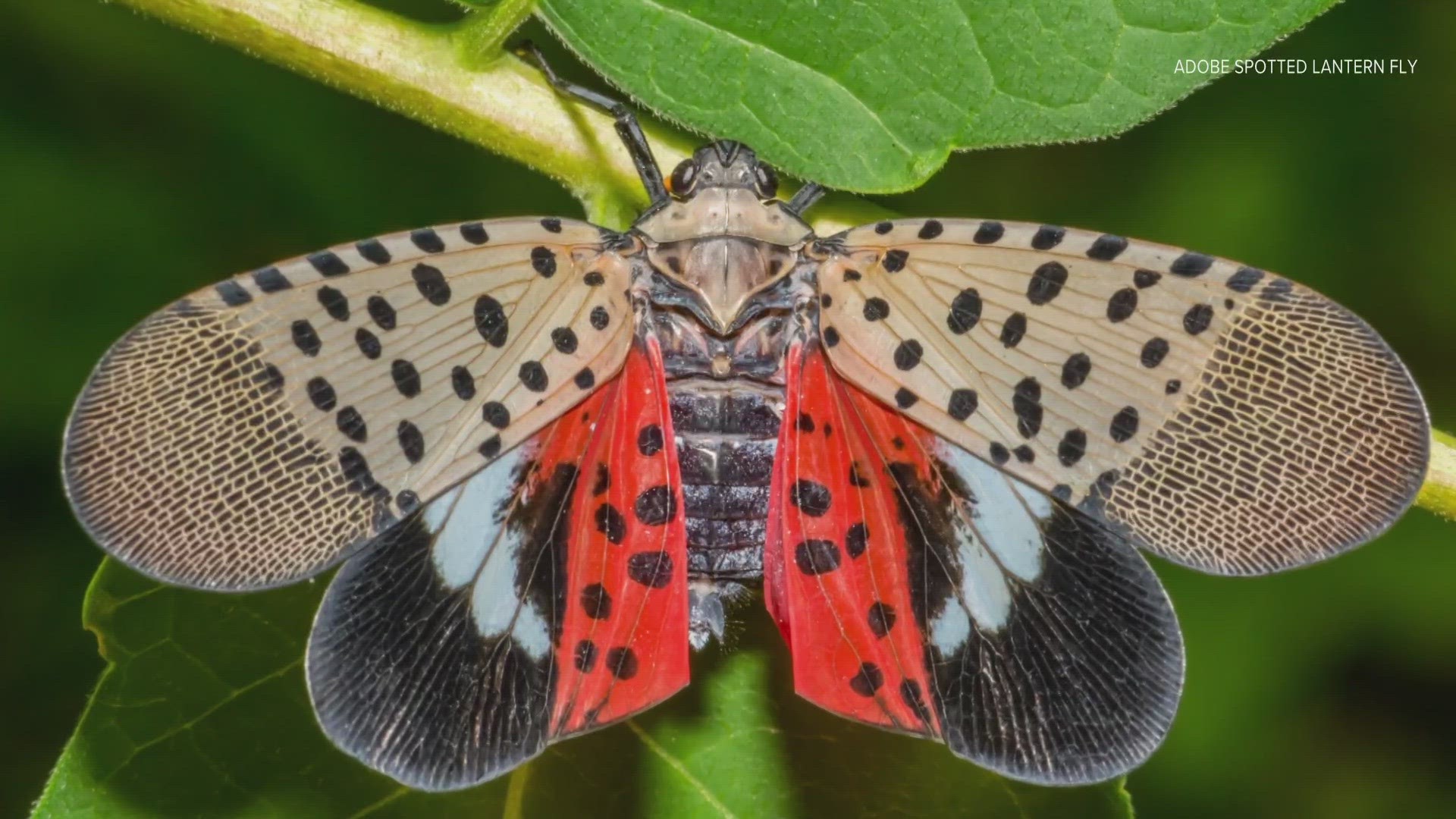LOUISVILLE, Ky. — An invasive species has been spotted in Kentucky and has state etymologists on high alert.
Experts believe the spotted lanternfly could cause significant harm to the commonwealth's natural environment and impact several industries if not properly dealt with.
It was first spotted in Gallatin County, Kentucky. That about an hour north of Louisville.
According to the University of Kentucky, the spotted lanternfly should be of particular concern to Kentucky grape producers.
"Spotted lanternfly could pose problems for Kentucky grape producers, those working in the hardwood industry, growing apples or hops," said assistant professor Jonathan Larson of the University of Kentucky's Department of Entomology. "These sap-sucking pests also create a sticky mess with their fecal material, called honeydew, which can create big messes on residents' property."
According to a news release, the spotted lanternfly is incredibly destructive to host plants in the United States, known to attack over seventy distinct species of plants.
The insect was accidentally introduced into Pennsylvania and discovered in 2014. It's unknown how it arrived exactly and is impossible to determine.
Larson said eggs are currently being laid in infested areas, but are unlikely to hatch until next spring.


Spotted lanternflies are not picky about where their eggs are laid, with cars, trains, and various other transportation vehicles ideal locations for them.
The eggs are laid in patches that look like smears of mud. They can be particularly hard to see if laid on tree bark.
"If people are travelling to Switzerland Co. IN or to Cincinnati, OH they should check the surface of their vehicle and up under the wheel wells for hitchhikers or egg masses," Larson told WHAS11 News. "The egg mass is coated with a muddy like substance, when they are fresh they are white but it cures to a brown khaki color. If you see insects on your vehicle or eggs, destroy them."
Adult lanternflies are quite colorful. They're known for a bright red hue on their lower wings, with vivid stripes and spots on their upper wings. They're also multi-colored often featuring hues of blue, brown, black and white.
Lanternflies are supported by another invasive species, the tree-of-heaven. Fast growing, these are typically found in urban environments, but can quickly take over wooden environments and crowd out native species.
Although not dangerous to humans, it can make the outdoors unpleasant if their population grows too large.
"Their numbers get so high that people don’t want to be around infested trees. The adult lanternfly is large and will land on you, not an experience most people are looking for. They also defecate out a lot of 'honeydew' a sticky poop that can smell bad and attract bees and wasps who want to drink it," Larson says.
Larson said the potential invasion into Kentucky can be tracked and slowed down with the help of the general public.
If you suspect you've seen a spotted lanternfly, you're encouraged to take a photo and send it to reportapest@uky.edu and include the county and location of where it was spotted.
Make it easy to keep up-to-date with more stories like this. Download the WHAS11 News app now. For Apple or Android users.
Have a news tip? Email assign@whas11.com, visit our Facebook page or Twitter feed.

